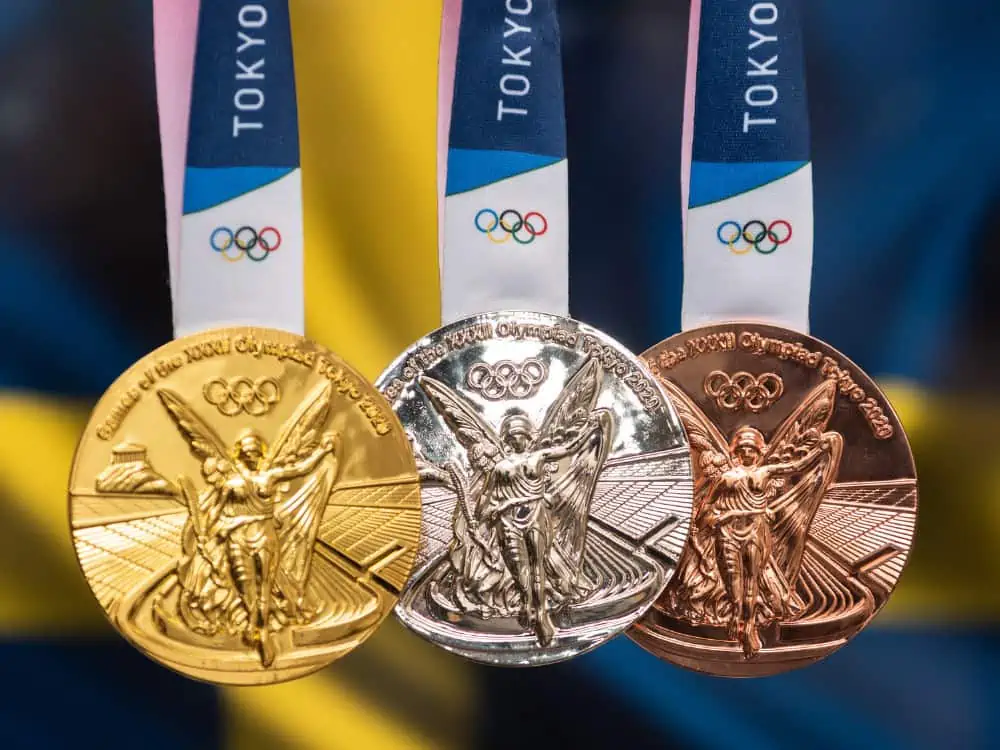Share the post "Why Is Men’s Olympic Soccer U23 (Age Limits)"
Soccer has been a popular sport in the Olympic Games since 1900. Up until 1982, all teams were made up of amateur players. From this point, several rules were introduced that changed the landscape entirely.
You may have noticed that men’s Olympic soccer has an age limit, prohibiting nations from fielding their strongest players. But why is men’s Olympic soccer U23?
This article takes a look at the age limit in men’s Olympic soccer, focusing on key topics, such as:
- The reasons behind the age limit
- When the age limit was introduced
- Overage player exceptions
- Winning Olympic teams
- Age limits in women’s Olympic soccer
If you were the coach of your country’s Olympic team, what would your starting 11 be?

Why Is Men’s Olympic Soccer U23?
The main reason for the age limit in men’s Olympic soccer is to prevent sporting competition with other major international tournaments like the World Cup.
Before 1984, professional players weren’t allowed to participate, ensuring the World Cup remained the highest level of international soccer.
In the 1984 Olympic Games, professionals were allowed to compete for the first time. However, those who previously played in a World Cup were not allowed to compete.
In the 1988 tournament, the rules changed slightly. A professional who played less than 90 minutes in a single World Cup game was allowed to represent his country.
Soccer Olympics FAQs
When Did Men’s Olympic Soccer Become U23?
Men’s Olympic soccer became U23 in 1992. This created a distinct separation between the senior national team and the Olympic squad.
The regular national team coaches typically don’t oversee the Olympic team. Olympic tournaments are treated differently from regular games and tournaments.
The U23 rule still exists to this day. However, due to the pandemic, an exception was made for the 2020 Olympics. Because the tournament was delayed for 12 months, players under the age of 24 were eligible, ensuring those who were selected for the original Olympics were still allowed to play.
Does Women’s Olympic Soccer Have An Age Limit?
Women’s Olympic soccer does not have an age limit like men’s. The women’s Olympics draws the sport’s biggest stars and always delivers extremely high standards.
Canada is the reigning champions, having defeated Sweden in the gold medal game of the 2020 Olympics. After the game finished 1-1 in extra time, Canada edged out the Swedes 3-2 in a tense penalty shootout.
The Overage Players Rule
For the Atlanta Games in 1996, the Olympics changed the ruleset for soccer. According to the new regulations, each country was allowed to add three overage players to their teams.
Nigeria was the eventual champion, defeating Argentina 3-2 with a 90th-minute winner in the finals.
The age restrictions and overage player rule haven’t changed since 1996. Every Olympic Games, countries are allowed to add experience to their teams with older players.
In the most recent Olympics (June 2021), held in Tokyo, Japan, Dani Alves was named captain of the Brazil squad. The Brazil team made it all the way to the finals where they defeated Spain 2-1 after extra time.
At the age of 38, this victory made Dani Alves the oldest soccer player ever to win an Olympic medal. All the better for Alves was that it was a gold one.
With 43 major trophies to his name, Alves is the most successful player in the history of soccer. After the tournament, he made a wild claim that the Olympic gold was the greatest win of his career:
“This means a lot for me. Everybody trusted in me, and I knew this would be a once-only opportunity, to be able to enjoy this dream. It’s not every day that you become an Olympic athlete, and even less at the age of 38…
I came with the boys to live the dream with them. And we have managed it, after a lot of effort and sacrifice, and we are taking the biggest prize back home, back to our people.“
Dani Alves, 2021

Men’s Olympic Soccer Winners
The age limit in Olympic soccer has created somewhat of an even playing field among participants. The success of a team depends on the available emerging talent in a country. Since the Olympic squad is separate from the national team, the tournament is often hard to predict.
Historically, the success of a country’s regular national team is not indicative of its performance at the Olympics. Many of the strongest nations at World Cups and other major tournaments fail to live up to previous successes when they participate in the Olympics.
Let’s take a look at every gold medal-winning nation in men’s Olympic soccer:
| Year | Gold Medal Winners | Host Nation |
| 1900 | Great Britain | France |
| 1904 | Canada | USA |
| 1908 | Great Britain | Great Britain |
| 1912 | Great Britain | Sweden |
| 1920 | Belgium | Belgium |
| 1924 | Uruguay | France |
| 1928 | Uruguay | Netherlands |
| 1936 | Italy | Germany |
| 1948 | Sweden | Great Britain |
| 1952 | Hungary | Finland |
| 1956 | Soviet Union | Australia |
| 1960 | Yugoslavia | Italy |
| 1964 | Hungary | Japan |
| 1968 | Hungary | Mexico |
| 1972 | Poland | Germany |
| 1976 | East Germany | Canada |
| 1980 | Czechoslovakia | Soviet Union |
| 1984 | France | USA |
| 1988 | Soviet Union | South Korea |
| 1992 | Spain | Spain (Barcelona) |
| 1996 | Nigeria | USA |
| 2000 | Cameroon | Australia |
| 2004 | Argentina | Greece |
| 2008 | Argentina | China |
| 2012 | Mexico | Great Britain |
| 2016 | Brazil | Brazil |
| 2020 | Brazil | Japan |
Some notable players who have won an Olympic gold medal include:
- Neymar
- Lionel Messi
- Dani Alves
- Javier Mascherano
- Carlos Tevez
- Richarlison
- Gabriel Jesus
- Gabriel Martinelli
- Samuel Eto’o
- Jay-Jay Okocha
- Pep Guardiola
Share the post "Why Is Men’s Olympic Soccer U23 (Age Limits)"
Joel is a seasoned soccer journalist and analyst with many years of experience in the field. Joel specializes in game analysis, player profiles, transfer news, and has a keen eye for the tactical nuances of the game. He played at various levels in the game and coached teams - he is happy to share his insight with you.



